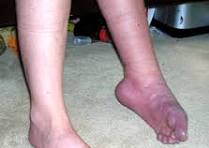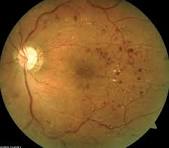INTRODUCTION:
Health is wealth—a simple yet profound truth. One sickness can drain a
lifetime of savings, leaving individuals and families in distress. While modern
medicine has made remarkable strides in diagnosing and treating diseases, many
health conditions continue to defy medical solutions, pushing us to explore
alternative approaches.
Natural remedies have been a cornerstone of healing for centuries, long before
the advent of modern pharmaceuticals. Across cultures and civilizations, people
have relied on nature’s gifts—herbs, roots, fruits, and holistic practices—to
restore health and vitality. While this encyclopedia does not seek to undermine
the importance of medical science, it aims to complement it by shedding light
on time-tested natural solutions.
Natural Remedies For Complex Regional Pain Syndrome (CRPS)
Complex Regional Pain Syndrome (CRPS) is a chronic pain condition
marked by persistent and often intense pain in one or more limbs. While
there is currently no cure, several natural remedies and complementary
therapies may help manage the symptoms and enhance quality of life.
These should be considered alongside conventional medical care, and
always under the supervision of a qualified healthcare professional.
Below are natural approaches that may provide relief:
1. Physical Therapy
How it works: Physical therapy supports mobility, reduces pain,
and helps prevent muscle atrophy in the affected limb.
Usage: Work with a licensed physical therapist experienced in
CRPS treatment. They will tailor exercises and stretching
routines to your condition.
2. Heat and Cold Therapy
How it works: Heat therapy improves circulation and relaxes
tense muscles, while cold therapy can reduce inflammation and
numb pain.
Usage: Apply a warm compress or heating pad for 15–20 minutes
several times a day. Cold packs should be wrapped in cloth and
applied for 10–15 minutes with breaks in between.
3. Mirror Therapy
How it works: By using a mirror to reflect the unaffected limb,
the brain can be tricked into perceiving the affected limb as pain-
free, helping to rewire pain responses.
Usage: Sit in front of a mirror so that the affected limb is hidden.
Watch and move the unaffected limb while observing its
reflection, simulating normal movement in the painful limb.
4. Desensitization Exercises
How it works: Gradual exposure to different textures and
sensations may reduce heightened sensitivity in the affected area.
Usage: Gently massage the limb using soft fabrics, sponges, or
textured objects. Increase stimulation gradually to help the
nervous system adapt.
5. Mind-Body Techniques (e.g., meditation, mindfulness, guided
imagery)
How they work: These techniques can lower stress levels and
reduce the brain’s perception of pain.
Usage: Practice regularly using apps or local wellness resources.
Techniques include deep breathing, visualization, and
progressive muscle relaxation.
6. Dietary Changes
How it works: Anti-inflammatory diets can lower systemic
inflammation and improve physical resilience.
Usage: Eat more fruits, vegetables, whole grains, and lean
proteins. Limit processed foods, refined sugars, and caffeine to
reduce symptom triggers.
7. Capsaicin Cream
How it works: Capsaicin, derived from chili peppers, can
temporarily desensitize pain receptors by reducing substance P—
a pain-transmitting chemical.
Preparation/Usage: Apply a capsaicin cream to the affected area
following the instructions on the product label. Note that a
burning sensation is common at first.
8. Turmeric
How it works: Curcumin, the active compound in turmeric, has
strong anti-inflammatory and pain-relieving effects.
Preparation/Usage: Incorporate turmeric into meals or take
standardized supplements. Consult a healthcare provider for
dosage recommendations. Available in health stores and local
markets.
Key Consideration:
Always seek medical advice before using any natural remedies for
CRPS, especially if you’re on medication or undergoing other
treatments. These remedies may help manage symptoms, but they are
not replacements for professional medical care. A combined approach,
integrating natural therapies with conventional treatments and guided
rehabilitation, tends to offer the most reliable path toward pain
reduction and functional improvement.



